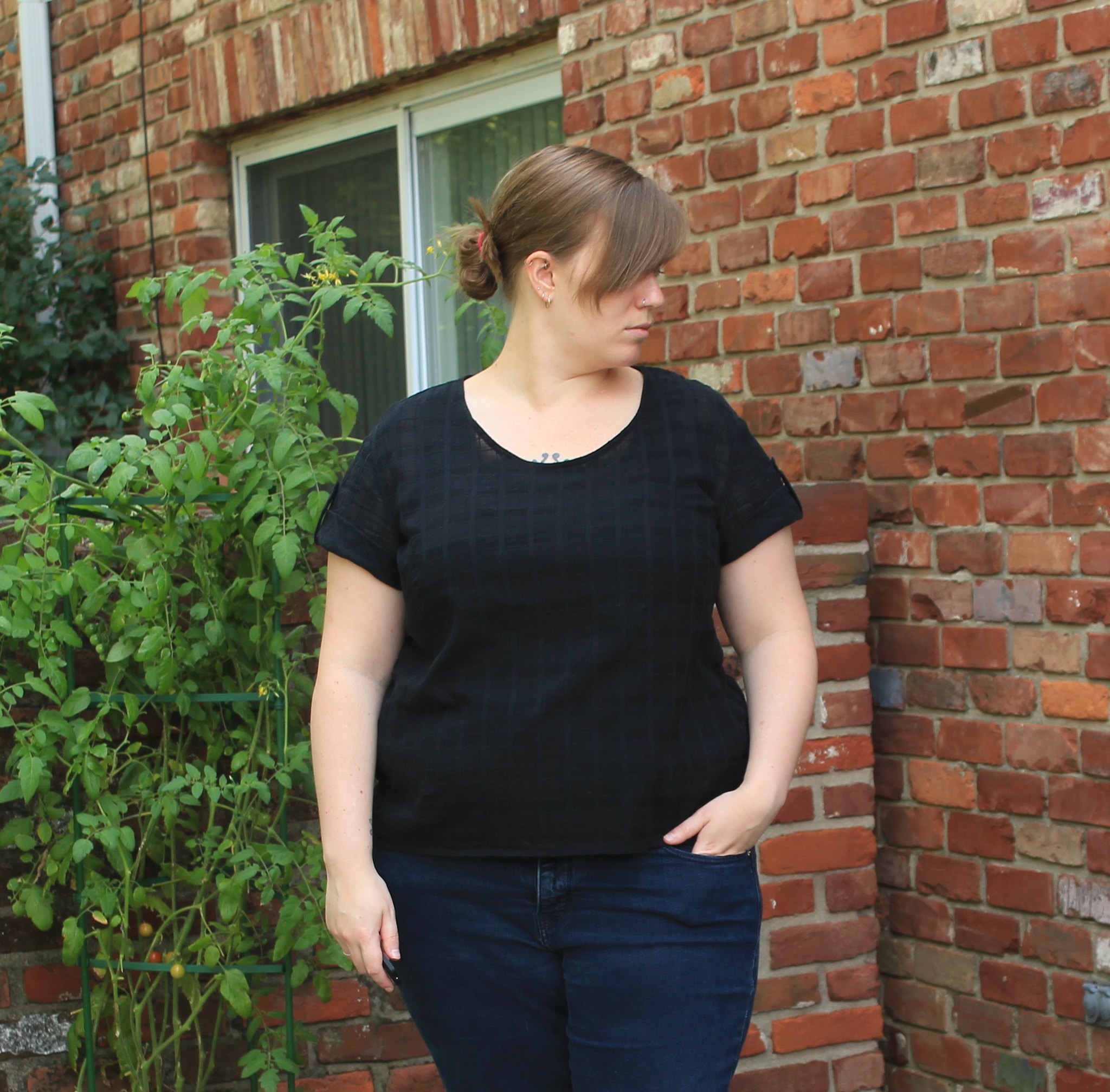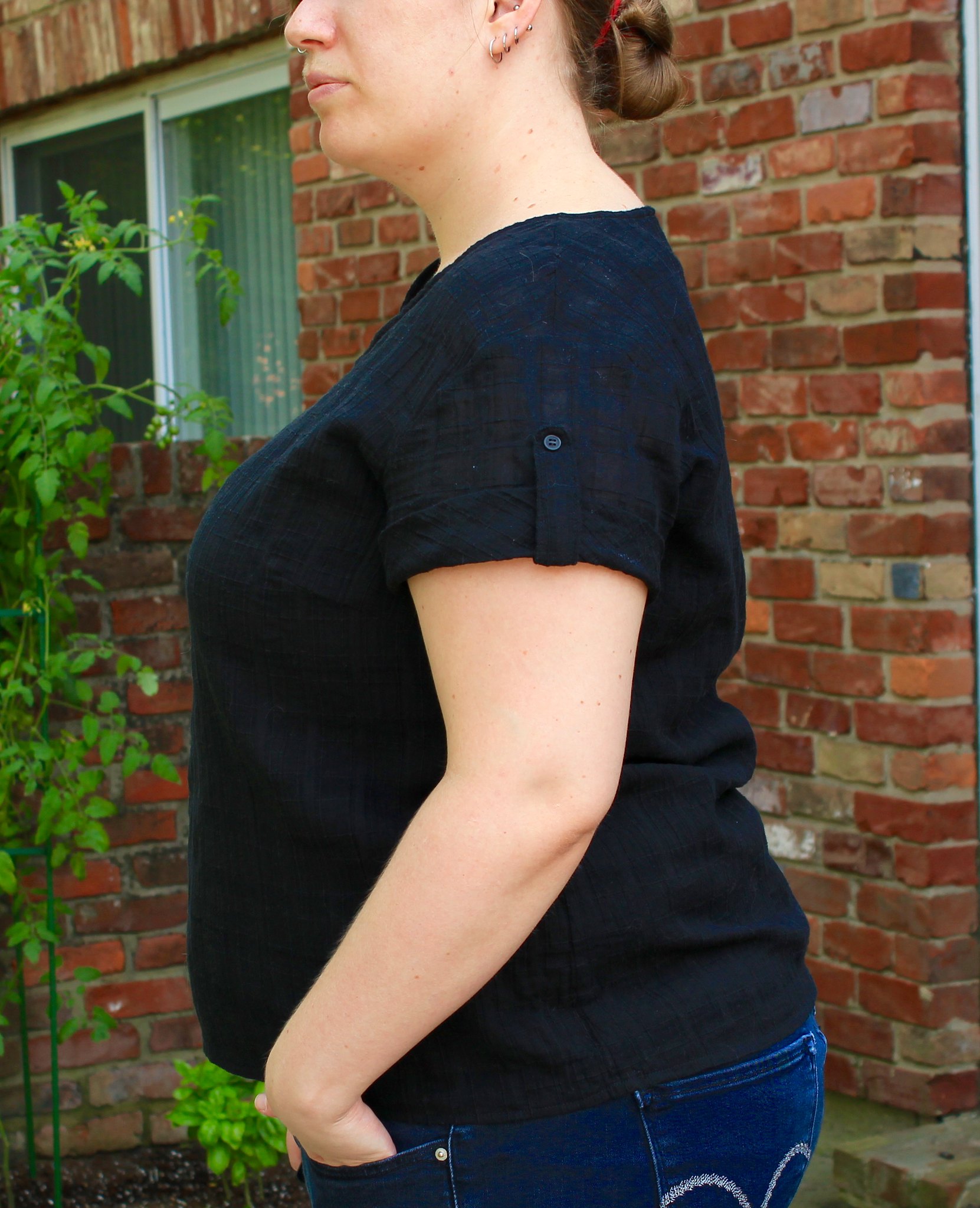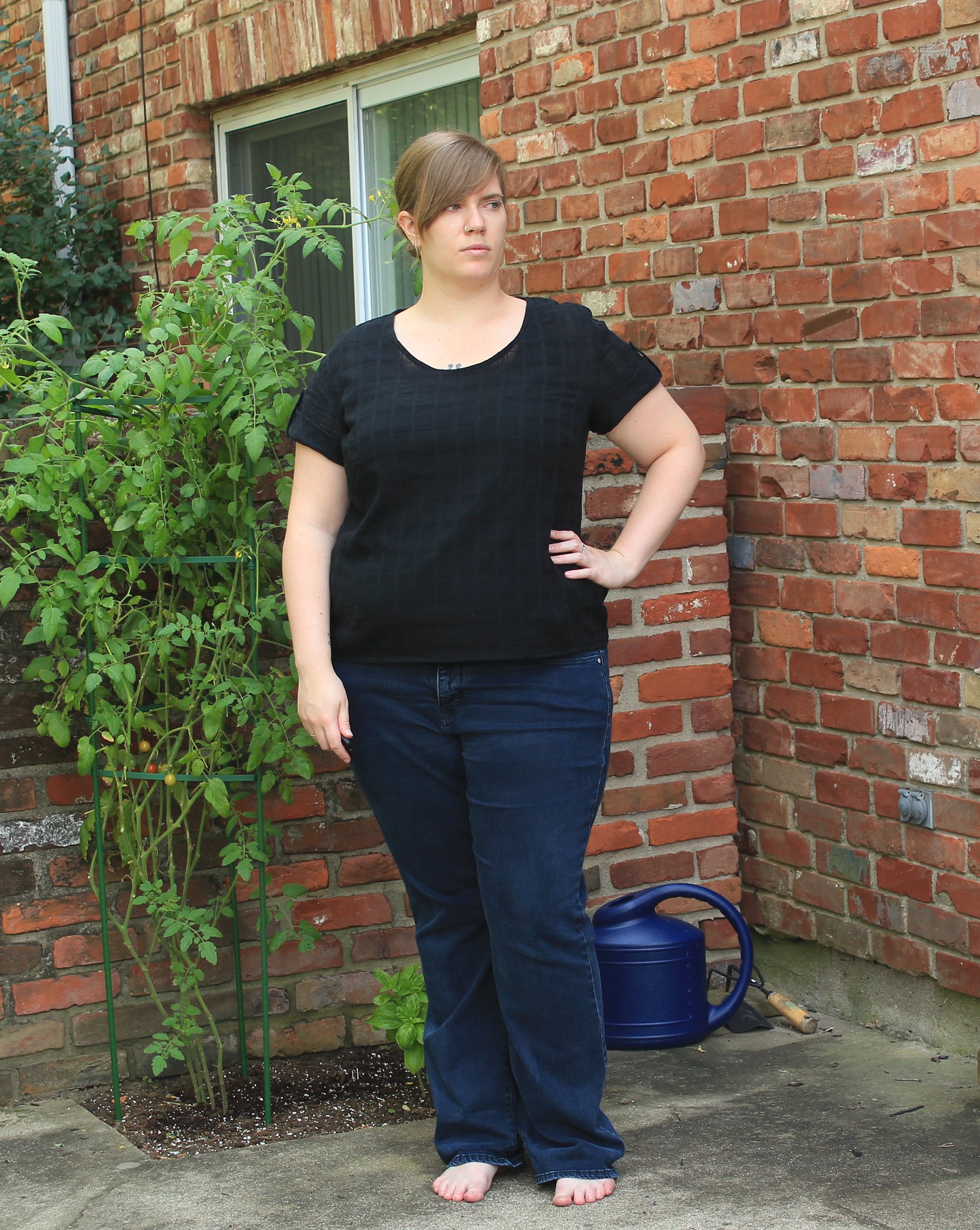When I found out that I was pregnant, I had no interest in sewing maternity clothes. Then I remembered that making my own t-shirts has ruined RTW tees for me. And then I bought my first terrible pair of maternity jeans (which required 20 minutes worth of alterations to simply stay on my body while I walked), and I figured the time spent sewing a few maternity items might be well worth it.
The sewing world is not overflowing with maternity patterns, which makes sense given that you are sewing to suit a relatively short period of time and given the lack of energy a lot of pregnant people experience. A lot of the available options seem to be skirts or dresses, which I don’t wear. The most widely reviewed patterns seem to be those from Megan Nielsen’s maternity pattern collection. But her patterns are a bit too feminine for my tastes and, more importantly, the size range is pretty limited and I’d be busting out of the top end of it.

In the end, I decided to try the Style Arc Maternity Bundle, which comes with the Mandy Maternity Top, the Andy Maternity Pants, and the Maternity Bandeau pattern. These patterns are very much basic wardrobe staples and are available in sizes 4-30. I’m in the process of trying out the Andy Pants pattern, but I’ve made several of the Mandy Tees and I’m really happy that I gave the Style Arc bundle a try. As far as I can tell, the only way that you can get these patterns is to order printed copies through the Style Arc site—they don’t appear to be available via Etsy or Amazon, unlike other Style Arc options. Despite paying for international shipping from Australia, I found that buying printed copies of the patterns was really affordable (especially since they throw in the free pattern of the month when you order directly from them). With the bundle price and the free pattern, I ended up getting four patterns for just over $30 USD and received the patterns in less than three weeks time.

The Mandy Tee comes with options for long or short sleeves. I need these for warm weather, so I only made the short-sleeved version. The length on the sleeves is perfect for me, and I’m pleased with the shape and depth of the scoop neckline. I made all of my shirts out of Telio bamboo/Spandex jersey I ordered from Fabric.com.

Honestly, the fabric alone makes sewing my own maternity tees totally worth it. The bamboo jersey is thicker and more opaque than every rayon jersey I’ve encountered while still feeling light and cool to wear—much cooler than a cotton-Spandex blend. Plus, it’s super soft but isn’t prone to pilling in the wash, which is perfect for shirts that I’m going to wear all the time given my limited wardrobe options.

These tees are really easy to sew, even with Style Arc’s sparse instructions. You are basically just making a really long t-shirt and then gathering a portion of the side seams by sewing in a short length of elastic. To do this last step, I sewed the side seam on my regular machine rather than the serger and pressed the seam open. Then, starting toward the bottom of the shirt, I anchored the end of the elastic in place, stretched a small bit of the elastic out along the seam and sewed it in place with a zigzag stitch, and then repeated the process until I got to the end of the elastic.

Side seam from the inside

Side seam from the outside
I used ¼” elastic rather than the 1/8” elastic called for in the pattern simply because it was what I had on hand, but I think the slightly wider elastic was easier to control. The gathered part of the shirt looks pretty lumpy and gnarly when you first pull it off the machine, but it relaxes nicely with a healthy shot of steam.

I was worried that the exposed elastic on the inside of the shirt would be irritating and that the visible zigzag stitching at the side seams would be ugly, but neither is the case. I don’t feel the elastic at all and the zigzag stitching is hardly visible since it gets lost in the gathering of the fabric. I actually have a few maternity tanks from Old Navy that have a serged side seam and then have been gathered at the sides with clear elastic sewn to the serged seam allowance. There’s no visible stitching on the outside of those tops like there is on these, but the side seam is much bulkier and the elastic can feel a bit irritating. So that’s all to say that I much prefer the finish of these tees.

The downside of the printed Style Arc patterns is that they only come in one size, so you don’t have the option of grading between sizes. I just went ahead and ordered the size 16 for the t-shirt pattern based on my measurements at the time (I was nearing the end of my first trimester). I am usually pretty diligent about doing flat pattern measurements to figure out if I need extra width at the hips or at the bicep, and I usually consider doing at least a small FBA. But I completely forgot about all that business when I went to make this pattern up and just cut out a straight 16. Luckily, I’m pleased with the fit. The shirts are comfortable, they look good, and I feel like I have enough room to continue wearing these throughout the more ungainly stages of late pregnancy.

Here’s hoping I have a similarly positive experience with the Andy Pants!
































































